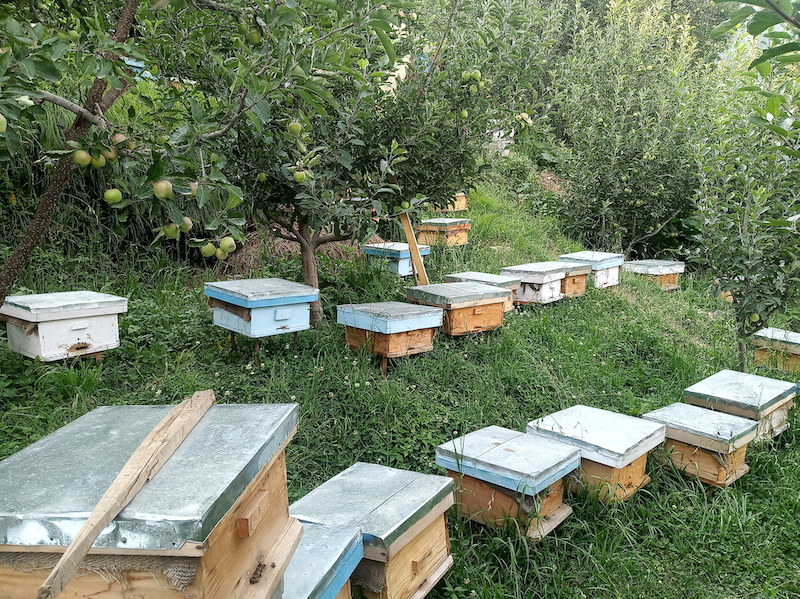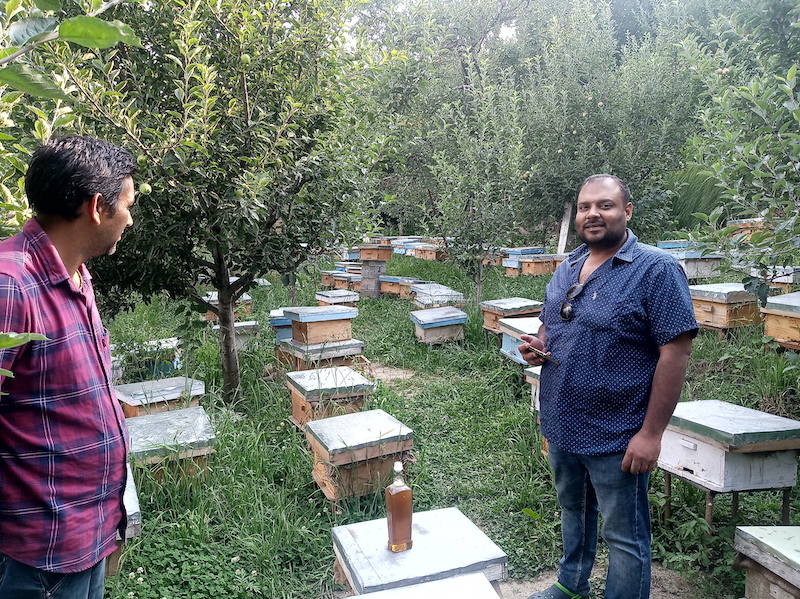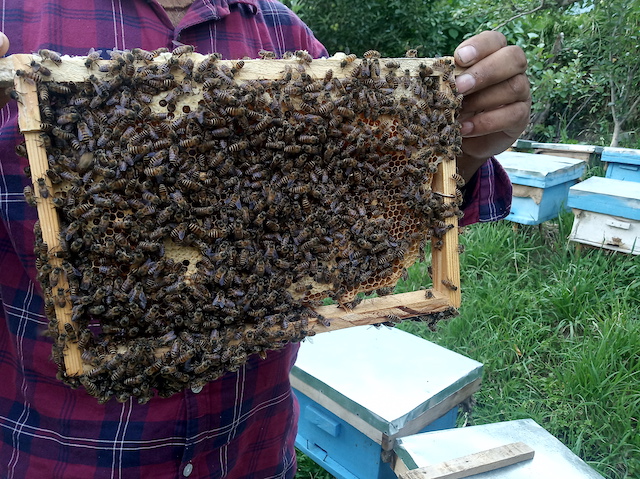Manali: Springtime in Himachal starting from March with plum, almond, peach, cherry, apricot, apple and other fruit trees blooming, it is also a period for honey production in the hilly state.

Hundreds of wood bee-keeping boxes lined up on open patches of land adjoining the orchards are a common sight. Kullu-Manali has emerged as a major producer of honey over the past few years, with many farmers, especially marginal farmers, taking to bee-keeping (apiculture) for supplementing their incomes.
Having taken to bee-keeping Lal Chand, a resident from a remote village in Kullu Manali confides that bee-keeping requires a lot of attention to get good yields as well as to maintain a healthy apiary.
Many bee-keeping projects have been started in our state and they are often supported by international organizations, governments or at times by some NGOs. It also fits well with other farming activities and only requires minimum resources to get started.
Hives of indigenous honeybees have evolved and survived more successfully in comparison to imported exotic ones and are better suited when getting started, he said.
Though beekeeping is a widespread activity with a lot of existing local knowledge and skills for the management of hives, but a little technical information can lead to better harvests of honey and beeswax.
Where most of the available literature is about bee-keeping of European bees in temperate zone conditions, much of the training is often theoretical rather than practical, placing emphasis on changing the type of hive used without providing practical guidance and follow-up, says Lal Chand.
“New beekeepers need training in how to work with bees, how to maintain honey quality, how to separate honey from beeswax, how to render beeswax, how to manufacture secondary products and how to make beekeeping clothes and equipment,” he adds.
Limited access to transport and the market is the main reason why beekeepers in remote areas get the lowest prices for their products.
Processing of raw honey is often rudimentary, but one can harvest excellent quality if clean collection buckets along with cotton or baskets for sieving honey and containers for melting wax and packaging the honey and other products are used.
The processing of honey and beeswax largely depends upon the available quantity. Larger quantities of hone require good processing equipment. Formation of cooperative societies does help in establishing of honey-packing units, which have hygenic taps for use on honey containers, special gauze for filtering honey and refract meters to measure water content.
In poor societies, lack of credit is a major constraint for bee-keepers to maintain an apiary and make a profitable sale of honey, especially when the market conditions are not favourable. Beekeepers with honey to sell expect to receive cash from honey-collection centers and private traders; otherwise, they are forced to sell their honey in small quantities in the market so as to secure instant but low cash returns.
Even the people buying honey need access to credit during the honey season. Lack of credit often leads to subdued volumes of honey being traded, which further slumps the market for lack of enough buyers.

Assem Singal, a honey trader from Delhi says that in poor countries, usually, government agencies are responsible for training and promoting beekeeping. He said that national policies are needed to promote apiculture and protect pollinators. A national-level NGO would be of considerable advantage to represent and protect the interests of beekeepers, establish communication between producers and traders and facilitate marketing.
Honey consumption increases with improving living standards and people are keen to buy honey when it is well presented and they have more confidence in the product, says Singal adding in developing countries, much can be done to increase retail honey sales, for example, by improving and diversifying packaging, especially for small volume markets. Marketing initiatives can involve promoting honey in the media, interacting with consumers and traders to increase honey consumption and sales, and creating links with packaging suppliers.
However, he adds, the first aim of a marketing initiative should be import replacement, which means ensuring that local honey is packaged and presented as attractively as the imported brands. Only when the local need for honey is satisfied should export be planned, as inexpensive honey is readily available in the global market.
In some countries, says Singal, producers have benefited from having their honey or beeswax certified as organic or produced according to fair-trade criteria. This type of certification can help small-scale producers to find niche markets that pay premium prices. Honey export to the European Community requires expert knowledge of trade rules and import requirements.
Photos by: Sanjay Dutta

Sanjay Dutta, an engineer by qualification but is a journalist by choice.
He has worked for the premier new agency Press Trust of India and leading English daily Indian Express.
With more than a decade of experience, he has been highlighting issues related to environment, tourism and other aspects affecting mountain ecology.
Sanjay Dutta lives in a village close to Manali in Kullu valley of Himachal.





Sustainable growth.
Entrepreneurship is encouraged.